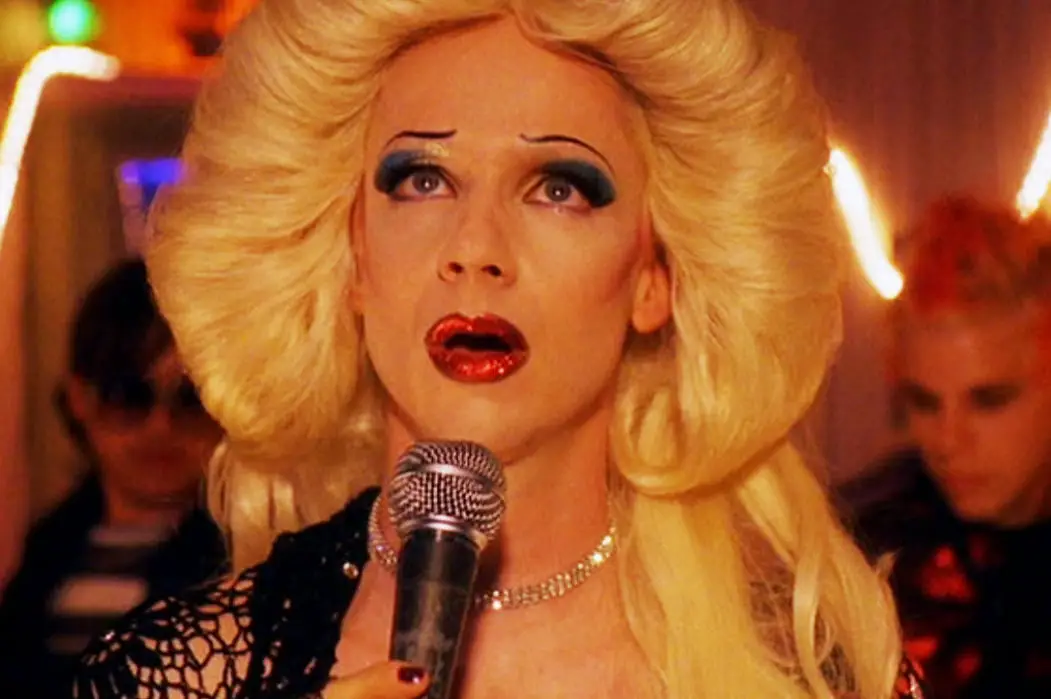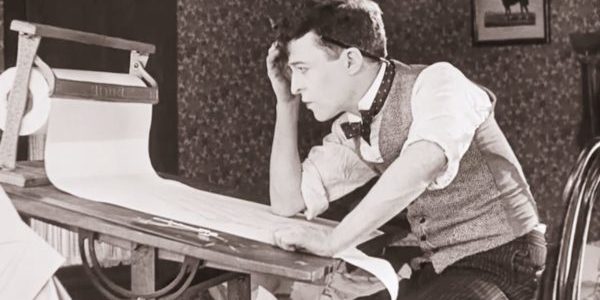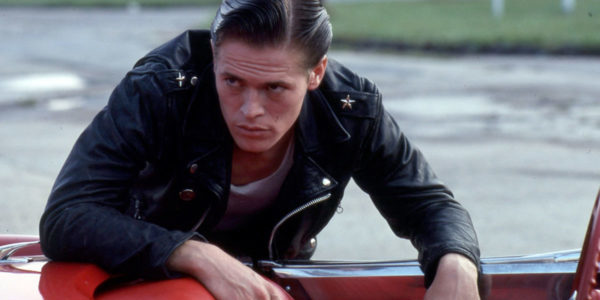Video Dispatches: Charley Bowers, HEDWIG & THE ANGRY INCH & THE LOVELESS

Midwesterner, movie lover, cinnamon enthusiast.
Video Dispatches is a regular column covering recent home video releases.
The Extraordinary World of Charley Bowers (1917-1940) – Flicker Alley

While his more famous contemporaries, Charlie Chaplin, Buster Keaton and Harold Lloyd, were interested in the physicality of daunting stunts and meticulous choreography, silent comedian filmmaker Charley Bowers was interested in the edit and the scenario. He made films about inventors — mainly one, budding, wiley but unsophisticated inventor whom Bowers shared a name with. Through a handful of two-reelers, he scrambled to figure out how to invent such essential problem-solvers of modern society as the elastic egg shell or the non-slipping banana peel.
Though most of his inventions are silly, one in particular is eerily prescient — and politically gross — as Bowers attempts, in He Done His Best, to create a full-service restaurant machine after all the other workers go on strike. The machine, which cooks and prepares food, sets tables, serves food and drink and washes the dishes all from a board of buttons, anticipates many aspects of modern commercial dining, as well as autonomous machines that have replaced workers in other spaces, such as the grocery store.
Other times, Bowers’ films feel like good sketch comedy, like Now You Tell One, in which he’s unwittingly brought into a Liar’s Club because the story of his life is so outrageous, it sounds like a better lie than the ones told by club members — a short that calls to mind George Costanza’s arc in the Seinfeld episode, “The Andrea Doria.”
Beyond the scenario, Bowers shines when he stops the narrative momentum to really show off with his stop-motion animation skills. In his booklet essay, Sean Axmaker draws a comparison between Bowers and Keaton’s love for machines before distinguishing them as such: “But where Keaton took an engineer’s delight in the operations and mechanical possibilities of steam engines and paddle boats, Bowers applied the limitless imagination of a cartoonist and the tools of stop-motion animation to push the conceptual possibilities of his devices beyond the limitations of physics and into the realm of fantasy.”
One of the best moments of his entire surviving filmography exists in Egged On, when Bowers, whose alter ego is trying to transport stolen eggs to his new invention, animates the eggs hatching into tiny cars that slink into action and scurry around the screen like ants for a minute. The rest of Egged On is grounded in reality and logic until this moment, which introduces Bowers’ unlikely touch for surrealism. And the time that he allows us to wallow as his world blossoms into a beautifully rendered fantasy.
Bowers’ films have been slowly surfacing since the 1976 discoveries by the Cinematheque de Toulouse, and most of the title cards of surviving prints are translated into French for the sake of translating jokes for local audiences (i.e. an early cartoon featuring pancakes is translated into crepes). Flicker Alley have translated these back into English with subtitles, maintaining the French cards. But Bowers’ films being taken to France has me thinking about his possible influence on Pierre Etaix, the masterful French comedian filmmaker who also thrived in the edit and with imaginative in-camera effects.
While a DVD set of the 17 surviving Bowers films was released 15 years ago, never have they been so lovingly presented, speaking both to this release as a tangible package and to Flicker Alley’s 2K restorations. I love these sets that introduce a wide breadth of work by an obscurant previously unheralded or unrecognized on home video, such as Kino’s 2018 release of Joaquim Pedro de Andrade films or Criterion’s earlier comprehensive release of Etaix films. Of course, it’s a shame there can never be a complete collection of Bowers’ work, but Flicker Alley have done well to give us what we do have available.
Hedwig and the Angry Inch (2001) – Criterion Collection

James Cameron Mitchell’s career as a filmmaker has been wildly unpredictable, and, though I’ve yet to get to his 2017 effort How to Talk to Girls at Parties, one I slowly watch unravel in slow, disappointing fashion. After discovering (and loving) Hedwig and the Angry Inch on the IFC Channel in the early 2000s, I was excited to make a cinema trip for his 2006 follow-up, Shortbus, an experiment about young New Yorkers’ sex lives that I found to be horribly rendered into pretentious big-city provocation. A few years later, Rabbit Hole, his adaptation of David Lindsay-Abaire’s depressing tragedy scrubbed any signs of Mitchell as a director that the previous films established — the audacious and independent bawdiness was replaced by prestige coldness.
This is all to say that I was slightly hesitant that the 17-year-old me that caught Hedwig on IFC one night might have enjoyed it more than the 34-year-old version of me would. Revisiting Mitchell’s adaptation of his own off-broadway musical about a rock star who’s suffered a botched sex-change operation via Criterion’s new Blu-ray release, I was relieved to still find it a vibrant and touching piece about finding self-identity and processing trauma through performance. Stephen Trask’s musical compositions are also still catchy as hell. And, thanks to a new 4K restoration, the film, shot by Frank G. DeMarco, looks absolutely gorgeous.
When Criterion announced details of their Hedwig release, many pointed out what a shame it was that the label, which has been far from exemplars of inclusion with their choice of releases, didn’t take the opportunity to commission the booklet essay from a trans film writer. It’s a curious choice and a pock mark on an otherwise dutifully packed product, which includes Mitchell and DeMarco’s 2001 archival commentary track (an increasingly rare addition for Criterion) as well as some newly filmed conversations between the collaborators that are generally interesting.
The Loveless (1981) – Arrow Video

Kathryn Bigelow and Monty Montgomery’s The Loveless , previously very hard to get a hold of, has been released by Arrow. The postmodern genre exercise, a vehicle for a young Willem Dafoe, strips away plot momentum to focus on textures of time and place — the 50s, diners, backroads southern America, the road, Coke machines, leather, grease, etc.
Writing in a contemporaneous review for Time Out , Geoff Andrew wrote, “ Where earlier bike films like The Wild One were forced to concentrate on plot, The Loveless deliberately slips its story into the background in order to linger over all the latent erotic material of the period that other films could only hint at in their posters.”
As mentioned, the film is credited to two directors, Bigelow and Montgomery, but because Bigelow has gone on to be a large industry name, while this remains Montgomery’s sole directing credit, The Loveless is most commonly referred to as Bigelow’s film. It’s certainly not an anomaly in Bigelow’s filmography; modern-day Bigelow is unrecognizable in this film, but not the one who examined masculinity within hardened social identities in Point Break. Interestingly enough, The Loveless might have more, or just as much, in common with a film Montgomery went on to produce — David Lynch’s Wild at Heart . It’s also hard not to think of Lynch’s Twin Peaks during many of these well-lived diner scenes.
The film sprouted to full-length from a film-thesis project, and under such consideration, The Loveless is quite impressive. Aided by Doyle Smith’s cinematography, it pulses beautifully and creates its space so specifically. However, the film’s second act sags unforgivingly, losing a lot of grace it gains with the fantastic opening 15 minutes, but manages to redeem itself with a touching close. But specks and all, it’s hard not to recommend The Loveless, or at least be happy that it now is no longer hard to find and lives on in hi-def with some decent features, including one specifically dedicated to its sumptuous textures, called “Chrome and Hot Leather.”
Does content like this matter to you?
Become a Member and support film journalism. Unlock access to all of Film Inquiry`s great articles. Join a community of like-minded readers who are passionate about cinema - get access to our private members Network, give back to independent filmmakers, and more.













